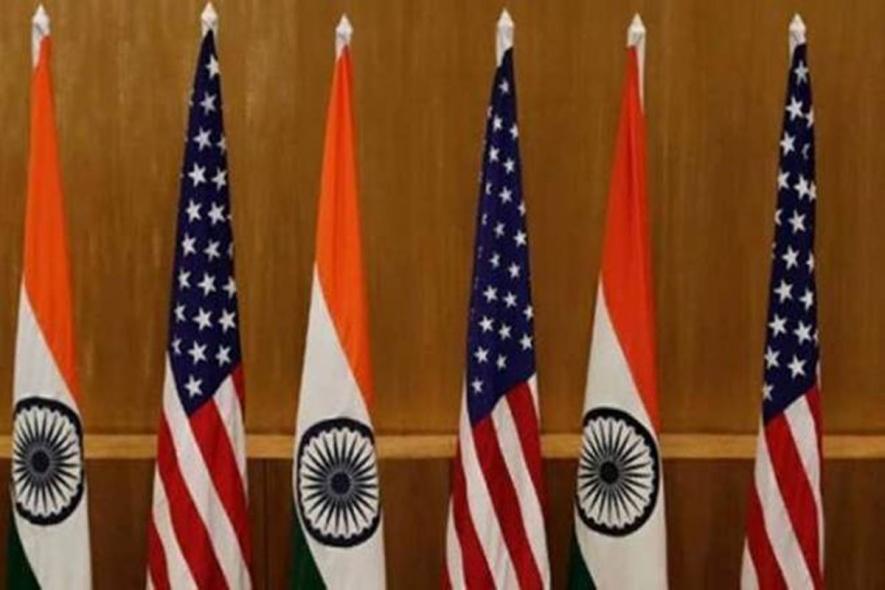The US and India have Another Commonality During COVID-19: Evicting Tenants

The congruence between the US and India has been increasing over the years – both have strong leaders who responded ‘bravely’ to the COVID-19 pandemic – the results are for everyone to see. India is fast catching up with the US in terms of the total number of COVID-19 affected patients. It is thanks to a common feature shared by both Trump and Modi: stubbornness, not science being the guiding material.
There is another commonality between the two, pertaining to the period of the pandemic. It is the large-scale evictions of tenants in their respective countries by landlords. The only difference is that in India, it was the state apparatus which further compounded the effect of evictions by forcefully carrying out a spree of demolitions and eviction of its citizens.
In the US, however, the government issued ordinances for a complete moratorium on eviction of tenants and lent ample support to them during the pandemic. In many places, the moratorium was supposed to expire on July 1. Some of the provinces, like Massachusetts, extended it till August 18. As a result, tenants in Boston had more time to prepare for the pandemic. The disparity of eviction displays the stark reality that the worst-hit were the African-American neighbourhoods and those where immigrant communities reside. According to an MIT study, 78% of the Boston eviction cases currently suspended by the moratorium were filed in the majority-minority neighbourhoods.
The Indian story is worse than that of the US. Aside from the eviction of tenants by the landlords, the government and its agencies carried out another kind of an eviction drive through demolitions in various parts of the country. According to a study by the Housing and Land Rights Network (HLRN), between March and June 16, eviction incidents have affected over 13,500 people, resulting in a massive violation of multiple human rights.
Places with maximum eviction incidents include Bilaspur in Chattisgarh; Coimbatore and Erode in Tamil Nadu; Jaipur, New Delhi, Siwal in Madhya Pradesh; Mumbai, Kalahandi in Odisha; Hubbali in Karnataka and Macheng in Manipur. There are many reasons for these evictions that include beautification projects, railway land clearance, widening and construction of roads and even some of the smart city projects.
This happened despite the fact that on March 11, 2020, Section 2 of the Epidemic Disease Act, 1897 was invoked: “power to take special measures and prescribe regulations as to dangerous epidemic disease.” Also, the WHO had laid down interim guidelines on “preparedness, prevention and control of COVID-19 for refugees and migrants in non-camp settings”. Still, the eviction drive was not stopped. The WHO guidelines were amply clear that community hygiene, and particularly in informal urban areas and settlements, where the majority of the people are vulnerable migrant populations, should be strengthened. However, none of the provisions that duly identified the grave situation of informal settlements in COVID-19, has led to the protection of the informal sector from eviction threats by the state, central and municipal institutions.
Eviction threats were faced and still are being faced in Maharashtra, Chhattisgarh, Karnataka, Rajasthan, Madhya Pradesh, Telangana, Odisha and Gujarat. These evictions were being witnessed when the former UN special rapporteur on adequate housing, in a guidance note, urged all states to end evictions for any reason, until the end of the pandemic and for a reasonable period of time thereafter. The UN guidelines laid emphasis on four major points: first, to declare end to forced eviction; secondly, prohibit emergency processes such as ‘de-densification’; third, security to tenure to the settlement and fourth, cease the forced eviction or dismantling of encampments of homeless people and recognize that in some instances encampments may be safer that other available accommodation.
The other form of eviction in India is akin to what was experienced in the US; the landlord-tenant duality. As businesses closed and workers were laid off, landlords moved to evict some of the tenants in large cities. The government, instead of actively intervening and bringing in ordinance to protect the tenants as it was done in the US, merely issued guidelines and niceties to be shown by the landlords to their tenants.
Some state governments issued guidelines to the landlords to not evict their tenants. The Delhi CM requested the landlords to forgive rent for the next three months and further went on to state the government would pay the rent if tenants fail to do so. The Maharashtra housing department advised landlords to defer rent for at least three months and not evict tenants for non-payment. Mere announcements in the absence of government ordinances for deference of rent do not legally absolve tenants from rental dues; and it did not. A large number of tenants were forced to evict their houses.
Landlords with deep pockets announced a full waiver for a few commercial tenants but this was not done by all of them. To some, it was not even possible; especially those landlords whose survival largely depends on rental incomes. With the lack of respite by the government, landlords were either forced to evict tenants or to pay for mortgage payments, electricity and water charges, insurance, maintenance, property taxes etc.
The government was hardly seen in this entire exercise. Even the RBI’s announcement of a three-month EMI holiday on various types of loans did not have any forbearance as it could only defer the mortgage payments and the interest continued to accrue on the outstanding loan amount; instead it should have completely waived off or discounted it.
The migrant workers will once again be forced to come back to the cities once the pandemic is over. The city planning agencies, including the parastatals run by the state government will have to focus more on public housing. In India, public housing has fallen from six to three per cent during Modi’s rule. At least 25% of public housing is required to ensure a sustainable development trajectory in urban India. The government, instead of providing loans under the PMAY(Pradhan Mantri Awas Yojana), shall have to bring in a paradigm shift to meet the housing demand. The cities will have to focus more on labour hostels and rental housing so that those who cannot afford houses offered by the private sector can stay in public-housing rental schemes. This will also put a check on the speculative real-estate in the cities. Meanwhile as an immediate step, the government must stop the demolition drive and must immediately announce a package of relief to the tenants so that the eviction drive can be checked.
The writer is former deputy mayor of Shimla. The views are personal.
Get the latest reports & analysis with people's perspective on Protests, movements & deep analytical videos, discussions of the current affairs in your Telegram app. Subscribe to NewsClick's Telegram channel & get Real-Time updates on stories, as they get published on our website.
























